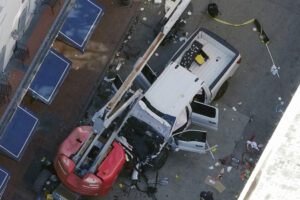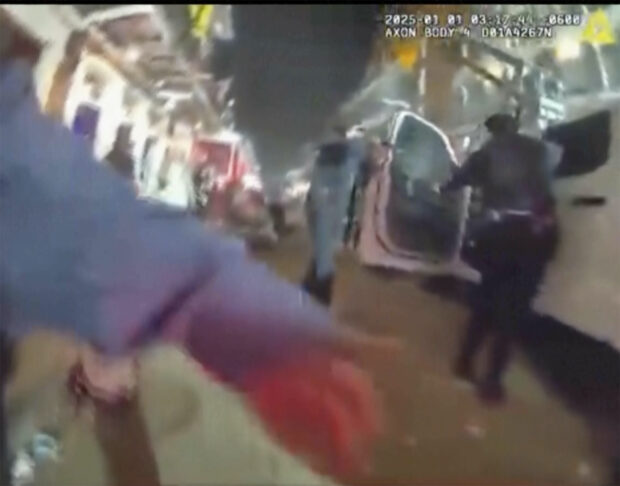While it may be too soon to talk about the insurance impact of tragic events, that is what we do in the insurance industry. So, hopefully you will understand my attempt to be clinical here and make some observations about the recent terrorist attacks.
Executive Summary
Opinion: In the aftermath of a terror attack in New Orleans and an explosion in Las Vegas, long-time insurance industry investor and analyst Ian Gutterman started thinking about the liability implications of a common thread between the two events: a rented vehicle. Gutterman, founder and CEO of Informed Insurance, has no specific knowledge of liability insurance carried by Turo (the renter in both instances) or other rental companies. (Nor does Carrier Management.) His purpose here is to connect the dots between nuclear verdicts already pounding liability and commercial auto insurance results and a potentially unappreciated new risk for insurers and brokers serving transportation company clients.
This article was originally published on Jan. 8, 2025, with the title “The Evolving Terror Liability Risk” on Gutterman’s website, “Ian’s blog: Nominal Returns” at https://www.iansbnr.com/. He also invited discussion of the blog post on LinkedIn.
Carrier Management is republishing the blog post with his permission.
The recent spate of car-based terror attacks (both here and abroad) creates some unexpected new exposures for insurance companies.
While the obvious thought will be about the property exposures, that isn’t my real concern. Most commercial real estate owners buy enough terror cover that a car (even if filled with explosives) isn’t going to go through the top of a tower.
The real risk is liability. We’re not used to thinking of terror as a liability risk, but in our nuclear verdict culture, there are some significant exposures here and much less cover is bought.
For example, a victim of a car chase in Chicago was awarded $80 million because the Chicago Police were found negligent for initiating the chase.
It doesn’t matter whether you or I think it’s right to make the police department pay for a criminal driving recklessly and killing an innocent bystander. This is the current liability environment we live in.
So, if one death is an $80 million judgment, what is the cost of ten deaths caused by a terrorist? I would say $800 million is the minimum. It’s probably over $1 billion.
Why?
Because it is easy to second guess after the fact and assign blame to cities or businesses that didn’t properly take enough action to prevent a possible terror attack.
Looking for Deep Pockets
We know in both the Las Vegas and New Orleans attacks that the terrorists got their cars from Turo. I would think, if I were the family of a victim, I would be suing Turo.
It is a lot easier to find a pattern of negligence when the same thing happens two times, rather than once. I’m sure Turo has a reasonable liability tower, but what do we think it is? $25 million? $50 million?
Read Turo’s response to the two attacks on the company’s website: In response to the New Year’s Day attacks – Field Notes: The Turo blog
It’s not $500 million, and it probably needs to be more like $1 billion. I don’t know their finances, but I wouldn’t be surprised if they go out of business from the liability.
The good news is this will create a lot more demand for insurers willing to take the risk.
The bad news is it’s a very difficult risk to price. Had anybody at Turo considered the vehicles they were brokering might be used as a weapon??? We tend to think of these risks after the fact (and limit loss).
And it’s not just Turo. We know the New Orleans attacker assembled explosives at an Airbnb. Do they have liability?
Future Headline Risk
What other related businesses could be at risk?
If you’re Hertz or Avis, you have to be having some hard internal discussions about how to limit your exposure here. But it’s not just rental car businesses. If a terrorist drives for Lyft or Uber, could they be exposed if the driver had accepted a pickup in the area they wanted to attack?

Who is to say the next terrorist doesn’t have a day job with access to a delivery van or even a large truck? Better add the Pepsi delivery driver, Walmart truck driver and JB Hunt operator to the potential liability list.
In fact, any small business that does deliveries has a new insurance exposure. They admittedly would need lower limits than large corporations, but they’re probably going to have to buy some terror coverage.
Next, we have municipal exposures. What if the next terrorist drives a city bus?
I don’t want to spitball every potential idea. (I doubt any of you have bad intentions, but maybe someone using a search engine could stumble on this.) The main point is this: If you’re writing anything wheels related, you probably should be considering your exposure here.
Related articles: AM Best: Increasing Political, Terror Risk Could Lead to More Demand for Coverage; Las Vegas Cybertruck Driver Used ChatGPT to Plan Attack, Find Targets
If you just renewed your customer at 1/1, well, better cross your fingers (and toes) for the next 12 months until you can rewrite your form.
Earnings vs. Balance Sheet Risk
The good news is the magnitude of loss from terror liability isn’t as high as for property, where losses can be in the tens of billions.
However, property insurers collect a lot more premium for that large loss potential. If you’re writing general liability for the corporate of a transportation company, there is a good chance you, unwittingly, threw in the terror for free.
Fortunately, the frequency of vehicle attacks is low enough that it is only an earnings event, not a capital risk.
Hopefully, security measures will evolve to make these attacks harder to pull off, though they’ve been going on globally for a decade now with little evidence of effective deterrence.
The industry tends to put a lot of mental energy (and rightly so) into anticipating cat risks, but there are few worse-performing lines over the long term than commercial auto. As we’ve seen more broadly in commercial auto, a few outlier nuclear verdicts each year can really sink earnings for a long time.
It is hard to imagine how one could write it profitably going forward if we have now added another source of significant liability without any corresponding premium.
Top Photo: This image provided by the New Orleans Police Department shows police body camera footage of officers approaching the white truck on New Year’s Day in New Orleans on Wednesday, Jan. 1, 2025. (New Orleans Police Department via AP)





















 Police Recover Swallowed Fabergé Pendant 6 Days After it Was Stolen
Police Recover Swallowed Fabergé Pendant 6 Days After it Was Stolen  AI in Property/Casualty Insurance: Why Trusted Data Is the Missing Link
AI in Property/Casualty Insurance: Why Trusted Data Is the Missing Link  Berkshire Hathaway Announces Leadership Appointments: New CEO at GEICO
Berkshire Hathaway Announces Leadership Appointments: New CEO at GEICO  ‘Dream Is in Sight:’ Chamber, Reinsurers, Insurers Urge Florida to Stay the Course
‘Dream Is in Sight:’ Chamber, Reinsurers, Insurers Urge Florida to Stay the Course 





